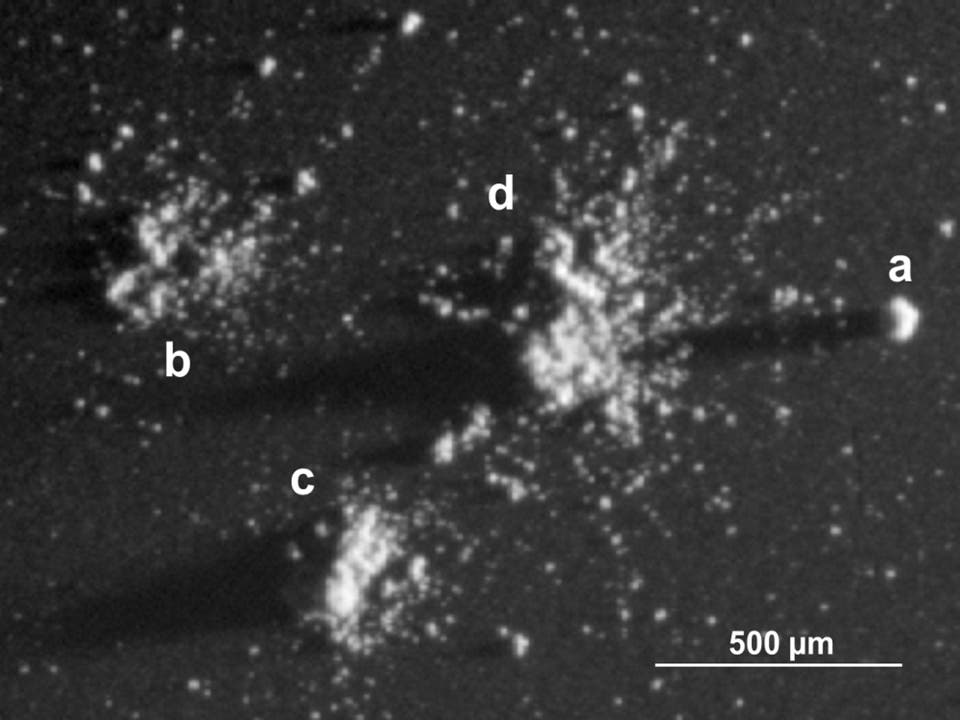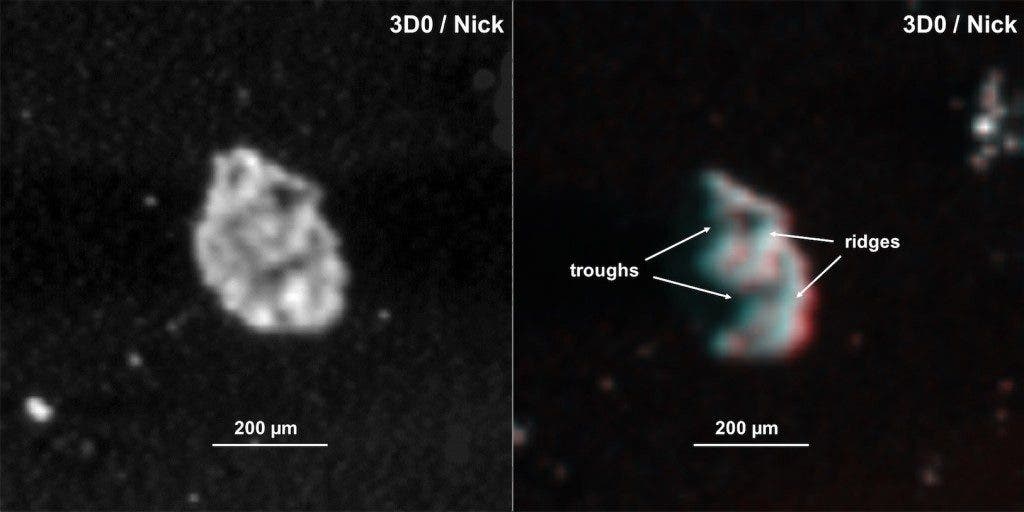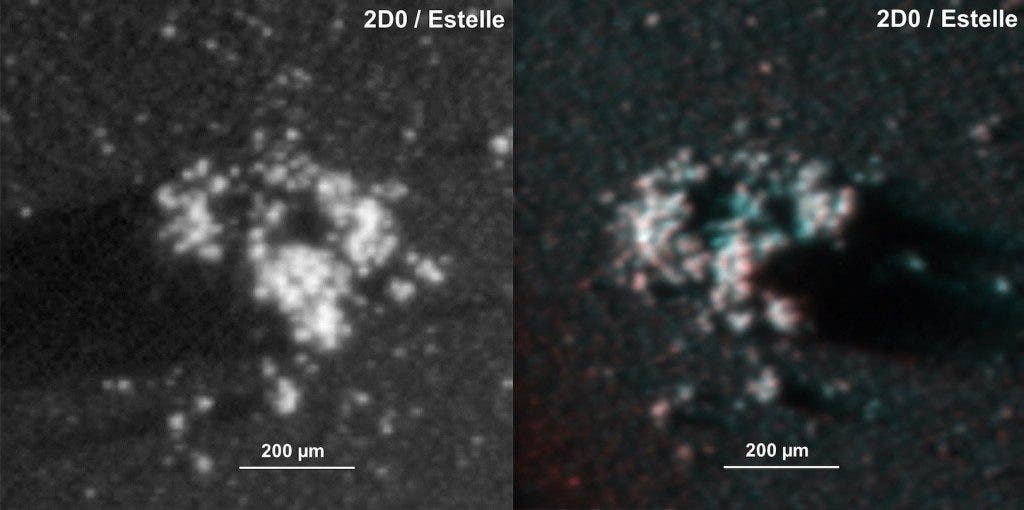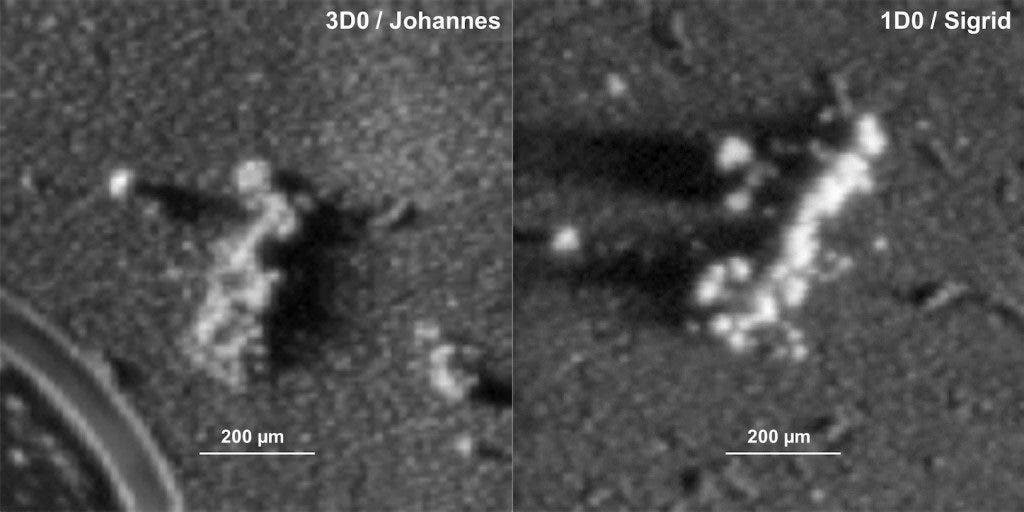Millions of miles afar, comets dot the night’s sky leaving an unmistakable trail of dust, gas and ice. In 2014, Rosetta’s Philae probe landed on a comet — a monumental achievement in space exploration — documenting the inner workings, chemical composition and structure of these fascinating cosmic bodies. Among others, we now know the 67P/Churyumov–Gerasimenko comet has sinkholes or holds primordial oxygen. Now, researchers revealed a more familiar curiosity: what dust particles on a comet look like.

Diversity of particles seen on a small area on one single target. This image section measures 2.5 mm across, with light coming from the right. Examples of a compact particle (a), a shattered cluster (b), a glued cluster (c) and a large rubble pile (d) are seen in this small area. Image: ESA
Dust grains were collected between 1 August 2014 – 3 April 2015 across nine 1 cm^2 targets and analyzed using the COSIMA instrument onboard Rosetta. The team led by Yves Langevin of the Institut d’Astrophysique Spatiale at CNRS/University of Paris-Sud, France, characterized the grains by appearance complexity and particle strength.
These images reveal particles from the comet are very diverse in scales ranging from a few 10s of micrometers (μm) to several 100 μm. In general, the dust families can be divided into compact particles or clusters, with the cluster group further subdivided into shattered clusters, glued clusters and rubble piles.

Compact particles are defined as those with well-defined boundaries, more-often-than-not found without any related smaller ‘satellite’ particles. Credit: ESA

Shattered cluster Estelle, one of the most tightly-packed shattered clusters identified. It has three major components plus many minor components. The right hand image is the 3D anaglyph. Credit: ESA

Glued clusters comprise relatively well-defined particles with an overall complex structure including sub-components which appear to be linked together by a fine-grained matrix, giving the appearance of a smooth surface texture. Credit: ESA
Reference: “Typology of dust particles collected by the COSIMA mass spectrometer in the inner coma of 67P/Churyumov-Gerasimenko” by Y. Langevin et al is published in the journal Icarus.









